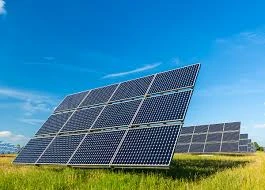back side of solar panel
The back side of a solar panel, often overlooked in discussions surrounding solar technology, plays a critical role in the overall efficiency and longevity of solar energy systems. While the front of the panel captures sunlight, converting it into electricity, the back side contributes to the panel's durability, thermal management, and overall performance.
First and foremost, the back side of a solar panel typically features a protective backing material. This layer serves multiple purposes it shields the delicate photovoltaic cells from moisture and environmental degradation, provides structural integrity, and offers thermal insulation. A quality backing enhances the panel’s resilience against weather extremes and operational wear, which is essential for maintaining efficiency over time.
Heat management is another vital aspect tied to the back side of solar panels. As solar panels absorb sunlight, they generate heat; excess heat can cause a decrease in efficiency, known as the temperature coefficient effect. The back side aids in heat dissipation through materials that are designed to conduct heat away from the solar cells. Effective thermal management can help maintain optimal operating temperatures, thus enhancing energy production, especially during hot weather when solar energy generation peaks.
back side of solar panel

Moreover, advancements in solar panel technology have led to significant improvements in back-side design. Innovative materials are being developed that not only improve heat dissipation but also enhance the panel’s overall performance. For instance, some manufacturers are now using bifacial solar panels. These panels capture sunlight from both the front and back sides, allowing them to harness reflected sunlight from the ground or nearby surfaces, thereby increasing energy output. Bifacial designs can lead to significant gains in efficiency, especially in environments with high albedo, such as snowy regions.
Additionally, the back side of solar panels is equipped with junction boxes and electrical connections, which are critical for the electrical efficiency of the system. These components must be meticulously designed and placed to ensure reliability and safety. Poor connections or inadequate junction box design can lead to energy losses, overheating, or even failures, underscoring the importance of quality engineering on the back side of the panel.
In conclusion, the back side of a solar panel, while often overshadowed by its front counterpart, is essential for overall performance, efficiency, and durability. As solar technology continues to evolve, innovations in back-side design will likely contribute significantly to the advancement of solar energy systems, making them even more efficient and reliable for widespread use. Understanding and appreciating these elements will help consumers and industry professionals alike to maximize the benefits of solar energy adoption.
-
Unlocking Energy Freedom with the Off Grid Solar InverterNewsJun.06,2025
-
Unlock More Solar Power with a High-Efficiency Bifacial Solar PanelNewsJun.06,2025
-
Power Your Future with High-Efficiency Monocrystalline Solar PanelsNewsJun.06,2025
-
Next-Gen Solar Power Starts with Micro Solar InvertersNewsJun.06,2025
-
Harnessing Peak Efficiency with the On Grid Solar InverterNewsJun.06,2025
-
Discover Unmatched Efficiency with the Latest String Solar InverterNewsJun.06,2025







